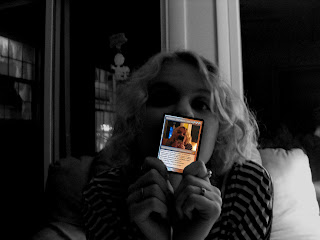1. William Henry Fox Talbot
2. 1800-1877
3. Talbot started to become frustrated with conventional methods of capturing an image. He needed to use a camera obscura, a devise that facilitated the drawing process. He began to wonder if it would be possible to capture nature's beauty on paper and have it remain on the paper. "And why should it not be possible," he replied to himself. This lead to his development of the calotype developing process for capturing photographic images.
4. Talbot is not necessarily best known for his shots; but, rather, he is best known for his contributions to the modern photography. He invented the calotype process which prompted more development to photography.
5. I was attracted to Talbot because he was very scientific. I am not so strong in my "right-brained" faculties; but, Talbot showed me that photography is a science as well as an art. Talbot's photos seem very ordinary to me; but, that is not the point to me. I like the fact that he developed a process that would influence the realm of photography for years to come.
6.
 |
| Cloisers (1843) |
|
 |
| Pantheon (1843) |
 |
| The Game Keeper (1843) |
 |
| Flowers, Leaves, and Stem (1838) |
|
7. Sources Consulted:
http://www.bbc.co.uk/history/historic_figures/fox_talbot_william_henry.shtml
http://www.luminous-lint.com/app/photographer/William_Henry_Fox__Talbot/A/
http://foxtalbot.dmu.ac.uk/talbot/biography.html
http://www.rleggat.com/photohistory/history/talbot.htm
http://www.metmuseum.org/toah/hd/tlbt/hd_tlbt.htm
http://masters-of-photography.com/T/talbot/talbot.html
http://museum.icp.org/museum/exhibitions/talbot/talbot1.html

















